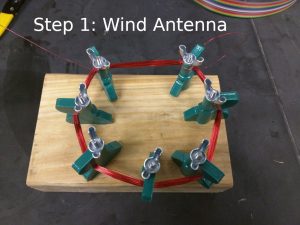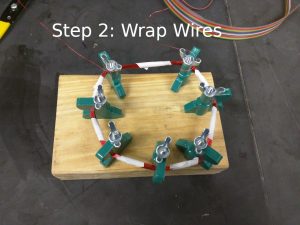Bridge Lab Antenna Winding
During my time as a postdoc in Eli Bridge’s lab, I developed a custom antenna winding peg. This design has been sitting in my folders for a while, but I recently posted it on Thingiverse. There is not much to the design of this part. A little channel shape funnels wire in as you wind, and the rotating action helps release the completed winding. Simple!
In Eli’s lab, he used these loop antennas for custom RFID readers. Since many of his projects require reading RFID bird tags in strange places (it’s hard to find an RFID bird feeder), he crafts his own. He uses fine gauge shielded wire and calculates the antenna parameters he wants to fit in a certain place, while tuned for a specific wavelength. With knowledge of the antenna radius (or area) he calculates the number of windings required to sample a wavelength. He uses a rotational counter to calculate the length of antenna spooled out onto a loop, then he confirms the design with an ohmmeter.
Design Comments
My design does not fundamentally change his method. He still wraps the antennas the same way. The convenient development here keeps the wire in place while winding, but still allowing quick release. Using simple rods as pegs, the wires slip apart and do not form the nice toroid shape. Using static notched pegs, after you wrap the wire, the antenna can’t come off the pegs! This design lets you get the best of both worlds.
This is a customizable design. For users who may not have the expertise to design custom pegs for a unique antenna, instead they can use the Thingiverse Customizer. I designed this with variables in OpenSCAD which determine the final results. Even if the user does not have OpenSCAD, he or she can enter these values online and get the exact file they need.
Picture Examples of Process
Preliminary steps not shown include: a) calculating the loop radius b) drilling holes in a board for the shape you want and c) printing the pegs. These steps will be left as an exercise to the reader.



